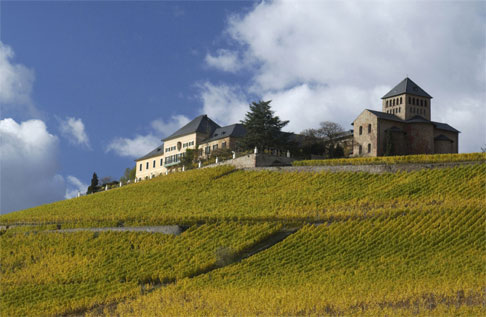 |
| Johannisberg Castle (Photo: DWI) |
The once great reputation of the Spätlese, first documented in Schloss Johannisberg in 1775, was thoroughly ruined by the sugared mass wines of the 1960s and 1970s. The glycol scandal in 1985 was the final point of the relegation to the lowest league in quality competition. Finally, the great wave of dry wines crossed the sea of cheap sweet products, at the crest of which the rediscovery of the Spätlese is now forming.
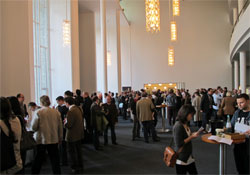 |
| Audience at the "Spätlese Renaissance" (Photo: U. Kauss) |
The Association of German Prädikat Wine Estates (VDP) invited for the second time to the "Spätlese-Renaissance", a public tasting in Cologne with a great audience. Almost 40 VDP estates from the Rheinhessen, Rheingau, Nahe, Middle Rhine and Moselle growing areas came to the foyer of the opera on November 20, 2011. Besides sweet cabinet wines, they showed the late vintages of the 2010 vintage as well as matured vintages up to 1976. "The wines often reveal their quality as late as after some years of bottle ripening. It is very important to us to bring this aspect closer to the public", explains Armin Diel, vintner at Schlossgut Diel and chairman of the VDP Nahe, who organized the Spätlese performance show for the first time in 2010.
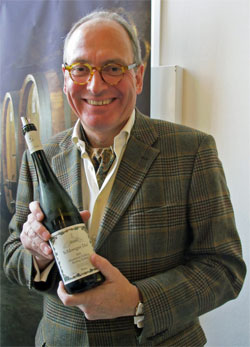 |
| Armin Diel (photo: U. Kauss) |
The crowd was surprisingly large: Wine lovers and wine professionals stood tightly packed at the vintners' lined-up tables and occasionally waited patiently until they could taste. In any case, this was not a niche event with a familiar character.
But what is a German Spätlese in the new millennium? This question can no longer be answered so easily. Is it sweet? Sometimes, but not always. According to wine law, the Spätlese harvest begins one to two weeks after the harvest date set by the municipality, the grapes must be fully ripe and the must must have a sugar content averaging between 76 and 95 degrees Oechsle (in Baden) - there are variations here depending on the growing region. During the past few years, more and more wineries produced dry Spätlese wines from these grapes and achieved great successes with them. The VDP went one step further in its classification: According to this, the dry wine from a first vineyard has to reach the must weight of the legal Spätlese - but it is called "Großes Gewächs". Only when the residual sugar of the wine from a first vineyard is above the definition of "dry", it is allowed to be called "Spätlese". Therefore, they can rarely be compared with the dry Spätlese wines of wineries that do not belong to the VDP.
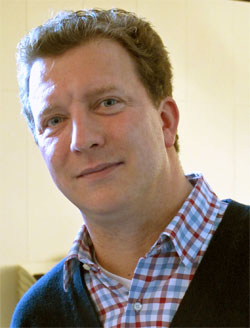 |
| Oliver Müller% Gut Hermannsberg (Photo: U. Kauss) |
Many of the wines served at the Cologne Opera come from grapes with must weights of well over 100 degrees Oechsle. Legally, they would be Auslese or even Beerenauslese, but the wineries downgraded them to Spätlese. Their residual sugar content was between 15 and well over 150 grams. This shows that sugar and harvest time alone are no longer valid categories. Oliver Müller from Gut Hermannsberg on the Nahe river tells that he and his winemaker Karsten Peter decided to no longer produce the two Spätlese wines in their renowned top vineyards Hermannberg and Kupfergrube, but in the less known first vineyards Rotenberg and Steinberg. "It is only there that we achieve a special minerality, which is an excellent match for our Spätlese. Balance and harmony are the most important things here."
The ever-increasing summer and autumn temperatures leave the literal meaning of the term "Spätlese" as an empty phrase. In some years of the past decade, only an early harvest would have saved compliance with the applicable Oechsle values. "But all that hasn't mattered for more than ten years now", Matthias Müller from Spay on the Middle Rhine, whom Gault Millau named "Winemaker of the Year 2012", confirms. "In the 70ies, high must weights only happened every few years. Today we harvest even the simple wines with must weights that used to be the exception." Müller's 2010 Spätlese wines were made from Auslese-quality grapes, with 80 to 150 grams of residual sugar against the high acidity levels of over ten grams per liter typical of the vintage. With maceration times, he brings extract and minerality into his wines.
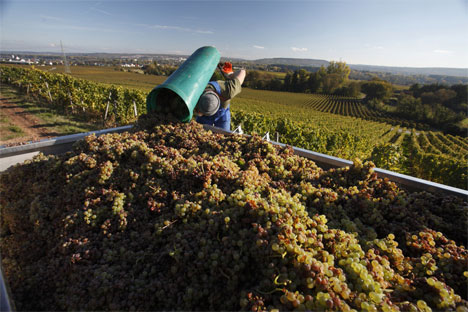 |
| Harvest in the Rheingau (Photo: DWI) |
This shows where the journey could go: Sugar adds a fourth dimension to the aromatic components of fruit, minerality and acidity. When the components are in balance, a type of wine emerges that harks back to old traditions, but conveys a new, complex wine experience: sometimes delicate, sometimes opulent, sometimes mineral, sometimes fruit-driven. After a few years of bottle ageing, many of these Spätlese wines are suitable not only for some Asian dishes( Asian cuisine exists at least as much as European cuisine), but also for hearty sausages, cheeses and even braised meats, at least as long as they are not overly sweet.
The traditional Spätlese demonstrated its specialness from a great year mainly through sweetness. That is now a thing of the past - like the economic miracle for which it stands like no other wine. Harvest times, temperatures, viticultural techniques and wine tastes have changed completely. Sweetness is no longer a rare luxury, but simply an optional flavor component. So it is time for the third generation of Spätlese: After luxury wine and cheap plum, now comes the complexity miracle. The prices of top wines continue to rise. A renaissance? In the literal sense of a rebirth: yes. But now it has to grow up.